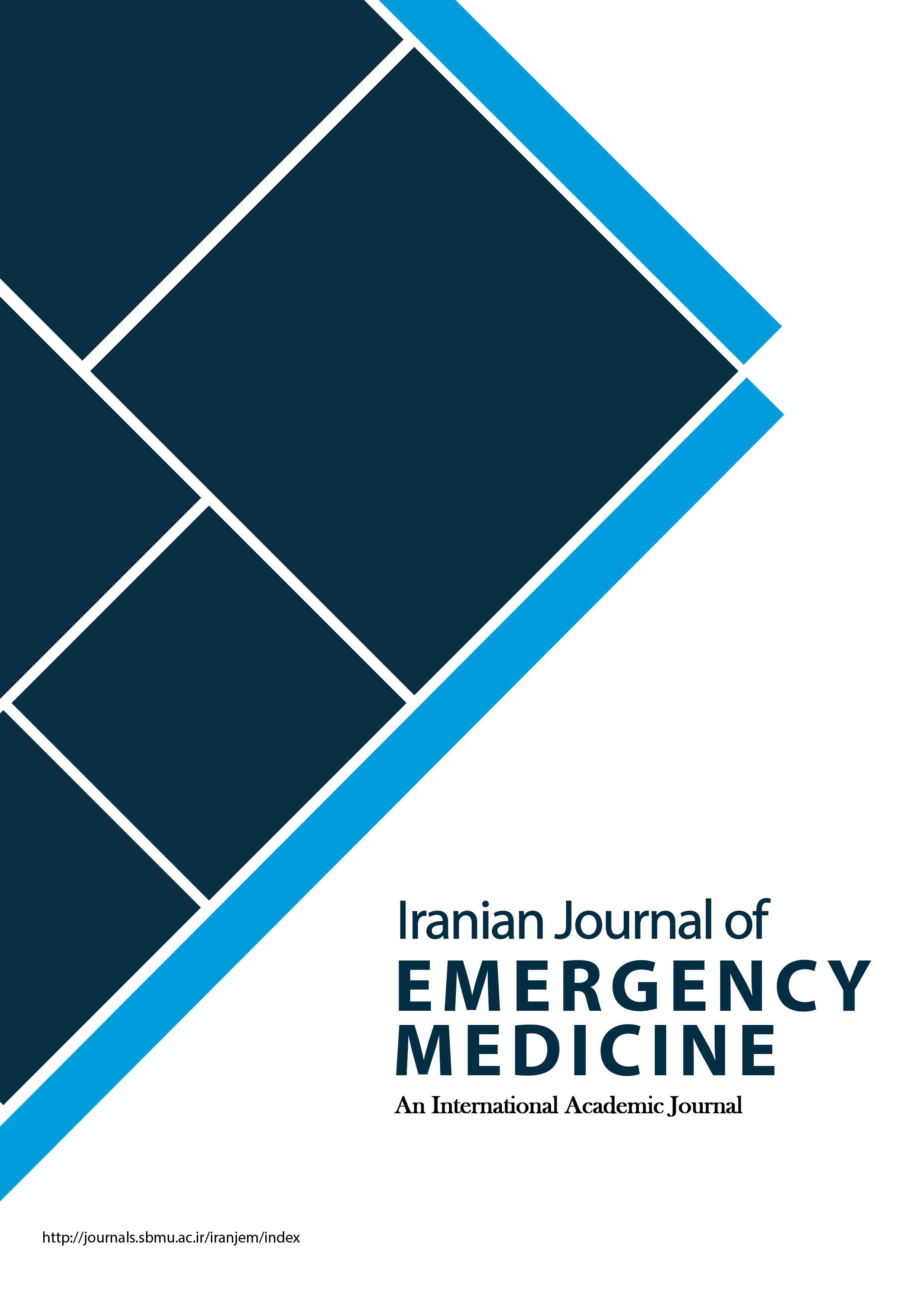Classification of Limping Causes in Children Referred to the Emergency Department; a Literature Review
Iranian Journal of Emergency Medicine,
Vol. 4 No. 1 (2017),
21 December 2016
,
Page 8-4
https://doi.org/10.22037/ijem.v4i1.15094
Abstract
Unusual walking and non-weight bearing on one side of the body is called limping. The incidence of this complication, as an acute complaint in children, is among the causes of emergency department visits and considered as one of the medical challenges in this unit. It is safe to claim that in emergency department, finding the exact cause is not a priority; conversely, it is more important to know that it is not caused by a serious condition. In other words, in the emergency department, ensuring that the cause does not threaten the patient’s life or limb is prioritized over reaching the final diagnosis. Emergency medicine specialists play an important role in detection, diagnosis, and proper referral of these patients. The current manuscript was written in order to facilitate clinical decision-making regarding treatment of children with acute limping visiting emergency department.- بخش اورژانس؛ کودک؛ ارتریت عفونی؛ تصمیم گیری بالینی؛ شرایط اورژانسی
How to Cite
References
Shah AP, Indra S, Kannikeshwaran N, Hartwig E, Kamat D. Diagnostic Approach to Limp in Children. Pediatric annals. 2015;44(12):548-56.
Lindsay D, D'Souza S. A limping child. BMJ (Clinical research ed). 2015;352:i476-i.
Lyons R. Acute Limping in a Young Child: Evaluation and Management Review. The Journal for Nurse Practitioners. 2015;11(10):1004-10.
Leung AK, Lemay JF. The limping child. Journal of Pediatric Health Care. 2004;18(5):219-23.
O’Dowd D, Fernandes JA. The Limping Child—What a Pediatrician Should Know? The Indian Journal of Pediatrics. 2016:1-7.
Kim MK, Karpas A. The limping child. Clinical Pediatric Emergency Medicine. 2002;3(2):129-37.
Herman M, Martinek M. The limping child. Pediatrics in review/American Academy of Pediatrics. 2015;36(5):184-95; quiz 96-7.
Barkin RM, Barkin SZ, Barkin AZ. The limping child. The Journal of emergency medicine. 2000;18(3):331-9.
Okoro T, Alo G. The limping child. Student BMJ. 2006;14.
Alshryda S, Wright J. Differentiating Between Septic Arthritis and Transient Synovitis of the Hip in Children: An Evidence-Based Clinical Prediction Algorithm. Classic Papers in Orthopaedics: Springer; 2014. p. 585-7.
Kocher MS, Zurakowski D, Kasser JR. Differentiating Between Septic Arthritis and Transient Synovitis of the Hip in Children: An Evidence-Based Clinical Prediction Algorithm*†. J Bone Joint Surg Am. 1999;81(12):1662-70.
Kocher MS, Mandiga R, Zurakowski D, Barnewolt C, Kasser JR. Validation of a clinical prediction rule for the differentiation between septic arthritis and transient synovitis of the hip in children. J Bone Joint Surg Am. 2004;86(8):1629-35.
Sawyer J, Kapoor M. The limping child: a systematic approach to diagnosis. American family physician. 2009;79(3):215-24.
Chasm RM, Swencki SA. Pediatric orthopedic emergencies. Emergency medicine clinics of North America. 2010;28(4):907-26.
Minasyan L, Herman MI, Wang VJ, Whiteman PJ. Limping: Evaluation, Diagnosis, and Management in the Pediatric ED. 2006;3(8):1-24.
- Abstract Viewed: 919 times
- PDF (فارسی) Downloaded: 651 times
- HTML (فارسی) Downloaded: 189 times



